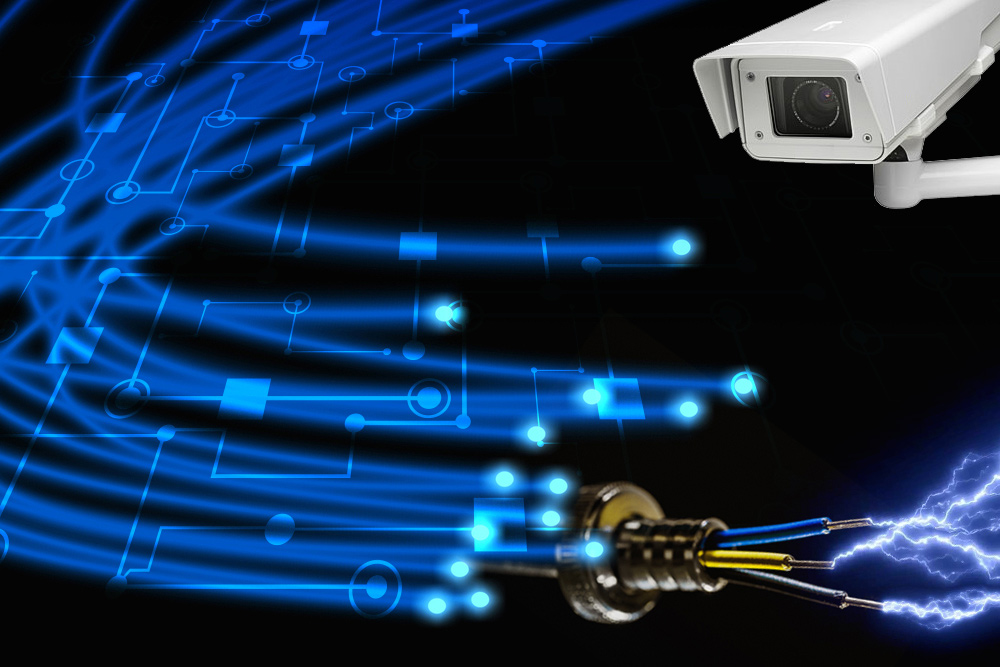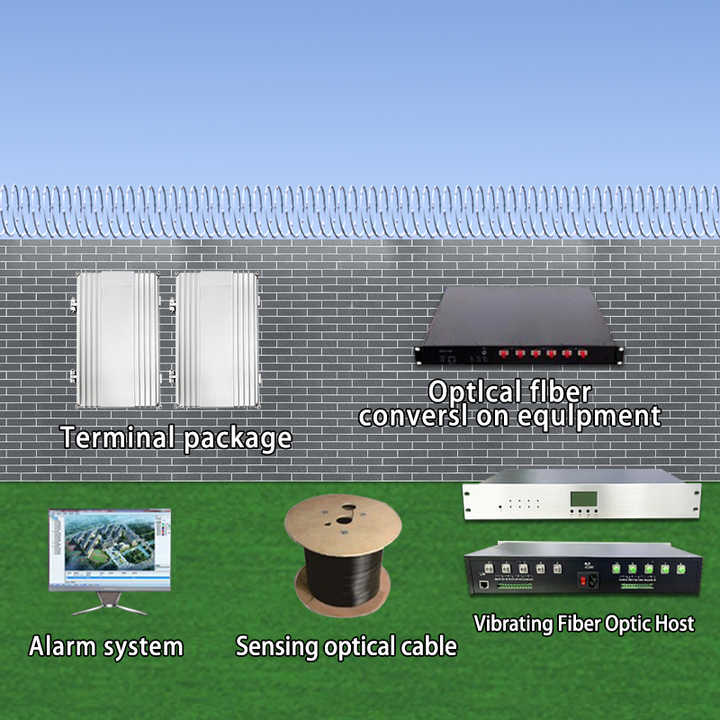The Importance of a Fiber Optic Security System in Safeguarding Sensitive Data and Facilities
Improve Your Safety And Security With Advanced Fiber Optic Safety And Security Solutions
In a period where protection is paramount, advanced fiber optic safety and security systems provide a compelling remedy for enhancing security across different environments. What effects do these improvements hold for future safety and security measures?
Benefits of Fiber Optic Protection
Using the advantages of fiber optic innovation dramatically enhances protection systems throughout various applications. One of the main advantages is the increased bandwidth capability, permitting the transmission of huge amounts of data at high rates. This is specifically vital for real-time video clip monitoring, where high-resolution feeds can be sent out without latency, making certain instant action capacities.
Furthermore, fiber optics exhibit premium resistance to electromagnetic interference, which is important in atmospheres with prospective signal interruptions. This integrity guarantees constant efficiency in crucial safety procedures. Fiber optic cables are much less vulnerable to touching and unauthorized gain access to compared to typical copper wiring, therefore boosting information stability and privacy.
An additional significant advantage is the resilience of fiber optic systems; they are more immune to environmental aspects such as dampness, temperature changes, and corrosive substances. This strength converts to reduce upkeep prices and longer lifespans for safety and security installments.
Finally, the lightweight nature of fiber optic cords helps with less complicated installment and directing, specifically in complex frameworks (fiber optic security system). Inevitably, the assimilation of fiber optic modern technology right into safety systems not just bolsters defense actions yet also enhances functional effectiveness
Trick Features to Take Into Consideration
When assessing fiber optic security systems, a number of essential attributes should be taken into consideration to make sure optimum efficiency and effectiveness. Assess the system's discovery variety and sensitivity; a substantial range enables for keeping track of big locations, while high level of sensitivity makes sure that also minor disruptions are discovered promptly.
Next, take into consideration the combination abilities of the system. A fiber optic safety system need to seamlessly interface with existing safety and security steps such as electronic cameras and alarms, creating a cohesive safety network.
Longevity and ecological resistance are also essential features. Guarantee that the system is developed to endure extreme climate condition and possible physical hazards, as this will certainly extend its functional lifespan.

Last but not least, check into the scalability of the system. A durable fiber optic protection system ought to be quickly expanding to suit future requirements without significant overhauls. By carefully taking into consideration these features, you can choose a fiber optic safety option that enhances safety and security and safety in your setting.
Installment Process Summary
To effectively apply a fiber optic safety system, a methodical setup procedure is crucial. This process begins with a detailed website evaluation to determine the specific safety needs and to determine optimal locations for fiber optic cable televisions and security gadgets. Following this assessment, the installation group will establish a thorough strategy, consisting of cord pathways, essential equipment, and compliance with local policies.
Next, the installation includes laying the fiber optic cords, ensuring they are secured from environmental variables and physical damage. Appropriate handling techniques are essential, as fiber optic cables are sensitive and can be quickly harmed. After the cabling is installed, adapters and discontinuations are diligently finished to make sure signal stability.
The succeeding stage consists of mounting security gadgets such as cameras, motion detectors, and alarm, all integrated with the fiber optic network. Strenuous testing is performed to verify that all elements try this website are working appropriately and to ensure optimum efficiency.

Comparing Fiber Optic to Standard Solutions
The advancement of safety technology has actually resulted in considerable developments in the contrast in between fiber optic systems and typical copper-based systems. Fiber optic systems use light to transmit data, supplying superior transmission capacity and speed contrasted to their copper equivalents. This leads to boosted information transmission capacities, making fiber optics suitable for high-resolution video clip surveillance and real-time surveillance.
In addition, fiber optic cable televisions are immune to electromagnetic interference, reducing the possibility of signal degradation brought on by exterior variables. This characteristic guarantees constant efficiency, also in challenging atmospheres. In contrast, typical copper systems are extra vulnerable to interference, resulting in potential susceptabilities in security applications.
Longevity is another benefit of fiber optic systems. They are less prone to harm from environmental factors such as dampness and temperature variations, which can compromise copper electrical wiring. Moreover, optical fiber are lighter and thinner, enabling for simpler installment and lowered physical impact.
Nonetheless, conventional systems often tend to have lower initial prices, making them eye-catching for budget-conscious tasks. While fiber optic systems might call for a higher upfront financial investment, their long-lasting benefits-- such as reduced upkeep prices and greater dependability-- typically exceed the initial cost, placing them as a premium choice for modern-day security requirements.
Future Trends in Safety Modern Technology
Arising trends in safety and security innovation are positioned to transform the landscape of monitoring and risk detection - fiber optic security system. As organizations progressively encounter advanced risks, innovations such as expert system (AI) you could try this out and device discovering (ML) are coming to be important to safety and security systems. These modern technologies boost the capability of fiber optic systems by allowing real-time information evaluation, recognizing anomalies, and automating feedbacks to prospective breaches
Additionally, the combination of the Internet of Points (IoT) is changing safety structures. IoT tools can provide extensive situational understanding and assist in smooth interaction between various security parts. This interconnectedness enables more efficient tracking and faster incident action times.
Biometric authentication is likewise obtaining energy, giving a greater level of security through unique physical characteristics. As this innovation advances, it is likely to be integrated into fiber optic systems for enhanced accessibility control.
Final Thought
Finally, progressed fiber optic safety systems represent a considerable advancement in safety and security and monitoring technology. Their exceptional bandwidth, resistance to interference, and durability help with reliable monitoring and data stability. As these systems integrate AI more information and IoT capabilities, they enhance the general safety structure, ensuring durable protection for possessions. The transition from traditional systems to fiber optic remedies mirrors an expanding trend in the direction of extra efficient and efficient safety and security measures in a significantly complex technical landscape.